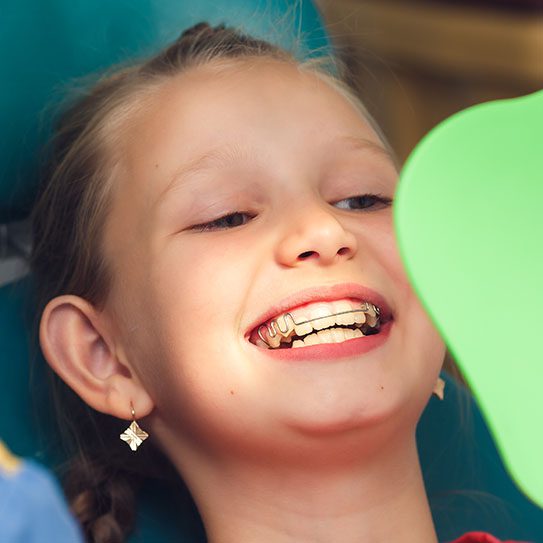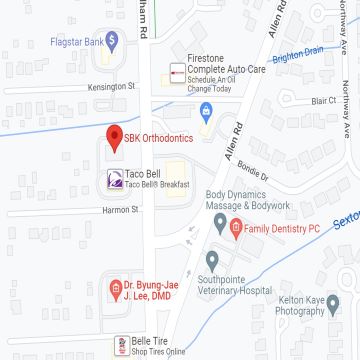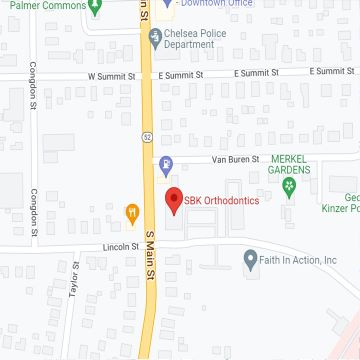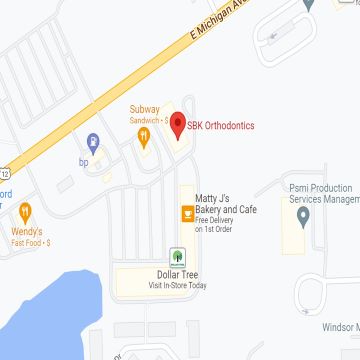What Is Early Orthodontics and When Do We Recommend It?


The Sooner, the Better: Why Early Orthodontics Matters
Parents often wonder when the right time is to bring their child to the orthodontist. Is it when permanent teeth come in? When baby teeth fall out? Or only if something seems wrong? The truth is, early intervention can make a big difference in a child’s oral development. At SBK Orthodontics in Ann Arbor, we believe that understanding early orthodontics can help parents make informed decisions for their children’s long-term dental health.
What Is Early Orthodontics?
Early orthodontics, also known as interceptive orthodontics, refers to orthodontic treatment that begins while a child still has a mix of baby and permanent teeth — usually between the ages of 6 and 10. This proactive approach allows orthodontists to detect and correct potential problems before they become more serious or complex.
The goal of early orthodontics isn’t necessarily to avoid braces later, but rather to simplify future treatment and set the foundation for optimal oral health and jaw development. By guiding the growth of the jaw and creating space for permanent teeth to emerge properly, early treatment can prevent or lessen more complicated orthodontic issues in adolescence.
Why Timing Matters
The American Association of Orthodontists recommends that children receive their first orthodontic evaluation by age 7. At this age, most children have a combination of baby teeth and permanent teeth, allowing orthodontists to spot developmental issues early. By intervening at the right time, we can:
- Guide jaw growth to improve bite alignment
- Create space for crowded or erupting teeth
- Reduce the need for permanent tooth extractions
- Lower the risk of trauma to protruding front teeth
- Address harmful oral habits like thumb sucking or tongue thrusting
At SBK Orthodontics in Ann Arbor, we often evaluate growth patterns and tooth eruption to determine whether early orthodontics could benefit your child.
Common Problems Early Orthodontics Can Address
Not every child needs early treatment, but for those who do, it can be extremely beneficial. Some of the most common issues that may require early orthodontics include:
- Crossbites: When the upper teeth sit inside the lower teeth, either in the front or back of the mouth. This can lead to uneven jaw growth and wear on teeth.
- Crowding: When there isn’t enough space for permanent teeth to emerge properly, leading to misalignment or impaction.
- Open bites: When the upper and lower front teeth don’t touch when biting down, often caused by thumb sucking or tongue habits.
- Underbites or overbites: When the lower jaw sticks out further than the upper jaw (underbite) or vice versa (overbite), affecting both function and aesthetics.
- Excessive spacing: Gaps between teeth that may be due to missing teeth or abnormal growth patterns.
- Protruding front teeth: Often referred to as “buck teeth,” these can be at greater risk for injury and may affect a child’s self-confidence.
Identifying and addressing these issues early can help ensure a healthier, more balanced bite as your child grows.
Types of Early Orthodontic Treatments
When early orthodontics is recommended, the specific treatment plan is customized based on the child’s unique needs. Common early orthodontic treatments may include:
- Palatal expanders: These devices widen the upper jaw to make room for crowded teeth and correct crossbites.
- Partial braces or space maintainers: These may be used to align specific teeth or hold space for incoming permanent teeth.
- Habit appliances: These help correct thumb-sucking or tongue-thrusting habits that can negatively impact oral development.
- Growth guidance appliances: Used to encourage proper jaw growth, especially in cases of underbite or overbite.
- Many of these treatments are relatively short in duration and are followed by a resting phase before comprehensive braces or aligners are used during adolescence.
Will My Child Still Need Braces Later?
In many cases, yes. Early orthodontics is often the first phase in a two-phase treatment plan. The second phase typically involves full braces or aligners once all permanent teeth have erupted. However, early treatment can significantly reduce the amount of time needed in braces later and may even eliminate the need for extractions or jaw surgery in more complex cases.
Our Ann Arbor orthodontists will monitor your child’s growth and development through adolescence to determine the most effective timing for the second phase of treatment.
What to Expect at Your Child’s First Orthodontic Visit
At SBK Orthodontics in Ann Arbor, we make every child’s first visit relaxed, informative, and stress-free. During this complimentary consultation, we will:
- Review your child’s dental and medical history
- Perform a comprehensive oral exam
- Take digital X-rays or photos if needed
- Evaluate growth patterns and tooth eruption
- Discuss whether early orthodontics is recommended
- Create a personalized treatment plan, if necessary
We encourage parents to ask questions and be active participants in the decision-making process.
Wondering If Your Child Needs Early Orthodontics?
Early orthodontics can be a game-changer for many children — addressing problems before they become more complicated and creating a smoother path to a confident, healthy smile. At SBK Orthodontics in Ann Arbor, we believe in a proactive, thoughtful approach to care that gives every child the best chance at a successful orthodontic outcome.
If your child is around age 7 and hasn’t had their first orthodontic evaluation yet, now is the perfect time. Contact our Ann Arbor office today to schedule a consultation and learn more about how early orthodontics could benefit your child.








